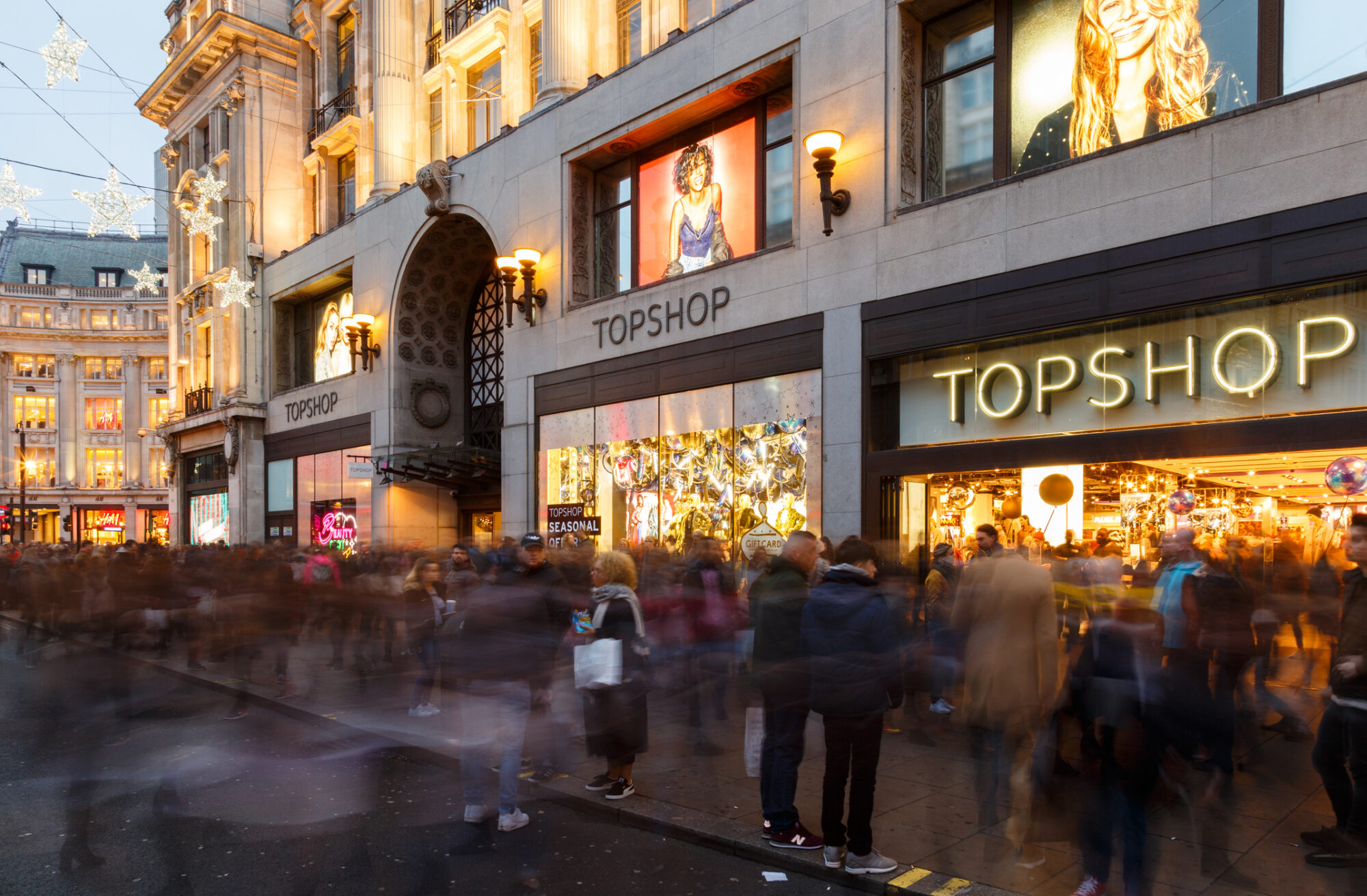Insights Article

For years, Topshop was one of the best known names on the British high street. At its height, it had more than 500 stores in 58 countries, including the famous Oxford Street flagship which spanned 90,000 square feet and attracted close to 30,000 visitors a day. For many of its loyal customers, it was not just a shop but a destination – complete with nail bars, music, and collaborations with leading designers.
However, by the late 2010s, the cracks began to show. Topshop’s share of the UK clothing market slipped, footfall slowed, and it struggled to compete with the rise of online-only rivals. When Arcadia went into administration in 2020, it marked the end of an era for a brand that once set the pace in fast fashion.
Get ready for Topshop 2.0
In 2025, Topshop is attempting a comeback. Backed by Heartland, the owner of Bestseller, the brand has relaunched with a high-profile campaign fronted by Cara Delevingne. The reboot is designed to balance nostalgia with a new sense of relevance. Popular products such as the Jamie and Joni jeans have returned, but the offer has been refreshed to appeal to a wider audience.
The new strategy looks to target 18 to 40 year olds – broadening beyond the teenagers and early twenty-somethings who once defined the Topshop customer. The relaunch is also omnichannel, with a new standalone website alongside pop-up shops and planned wholesale distribution. A fashion show in Trafalgar Square, the first in seven years, underlined the intent to put Topshop back at the centre of the fashion conversation.
Who were its customers – and who they are now?
Historical core customer:
Topshop originally built its reputation by serving young shoppers looking for affordable but fashionable clothing. In the 1970s it positioned itself clearly at teenagers, and in the 2000s it hit its stride with high-energy stores and celebrity collaborations such as the Kate Moss collection.
New target customer:
Today’s relaunch recognises that the audience has shifted. Fashion-conscious Gen Z and millennials still want style at a fair price, but they are also more demanding in other ways. They expect seamless digital experiences, value for money in a cost-of-living squeeze, and credible commitments to sustainability. They are also more likely to be influenced by authentic voices on social media than by glossy campaigns alone.
By aiming for the 18–40 bracket, Topshop is attempting to reconnect with those who remember its peak, while also appealing to a younger generation that may know the name but not the stores. It is a delicate balance: lean too heavily on nostalgia and the brand risks feeling dated, but chase only the new and it could lose the loyalty of older customers who once flocked to its stores.
The role of customer insight
Topshop’s revival is a reminder that brands cannot depend on reputation alone. To stay relevant, they need a clear, up-to-date picture of who their customers are and how their behaviour is changing. That means investing in high-quality insight on a continuous basis, not treating it as a one-off exercise.
The questions Topshop faces are the same ones any business will want to ask:
- Who exactly is our customer today, and how are they different from the past?
- What motivates their choices – is it price, quality, convenience, or sustainability?
- How do they want to interact with us – online, in store, or through social media?
- What are the barriers stopping them from buying?
Without a clear understanding of who your customers are and what they need, even the strongest brands can lose relevance.
Lessons for other brands
The fall and return of Topshop is a reminder that customer understanding is not just a one-off exercise. At its peak, the brand succeeded because it knew how to read trends and translate them quickly for young shoppers. Its decline came when it assumed its place on the high street was secure, and it failed to adapt to the digital shift.
The relaunch shows signs of a more insight-driven approach, with clearer positioning, a broader demographic, and a mix of digital and physical touchpoints. Whether it succeeds will depend not only on its marketing, but on how well Topshop listens to and serves its audience this time around.
For every business, the message is the same. Markets change, customer needs evolve, and assumptions are dangerous. The brands that endure are those that keep asking questions, keep listening, and keep adapting to their target customers’ needs.
Want to learn more about your customers?
Get in touch with us today to arrange a free consultation using the form below:
Want these kinds of results?
We’d love to talk with you about how our insights could help your business grow. Drop us an email at hello@clusters.uk.com or call us on +44 (0)20 7842 6830.